Mojave Preserve, Hole in the Wall
One of our favorite and often-visited destinations, Mojave Preserve is a giant 2,500 square mile piece of the southern California desert. Its history, terrain, and flora/fauna make for seemingly limitless sights and scenes, so we are here again for a week or so to explore and enjoy.
I’ve written previously about this area, so some of this post might be a bit redundant. If you haven’t seen the earlier posts, try the links from 2014 at the end of this post.
Also, I’ve photographed the camp kiosk posters, these too are at the end of this post if you’d like to read up on some of the area features.
For our visit this week (early January 2015), the weather promises to keep us entertained (and perhaps indoors). The current El Nino trend is driving unusual rainfall towards the desert, and five days of the next week are forecast to be very wet.
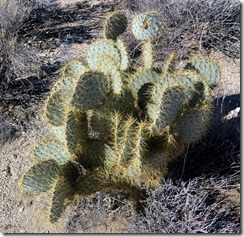
Like all of California, the desert has been hard-hit by the drought. The plump cacti of prior years have become thin and pale, bare husks of their former selves. These petals are barely 1/4 inch thick – – – we’ve seen them six times heavier in wet years.
Deep gray-greens of the desert plants and shrubs have given way to stark gray twigs with not a trace of chlorophyll. The only plant that seems to be flourishing in the sere climate is the mistletoe, parasitic red clumps drawing the scarce moisture from the struggling desert brush.
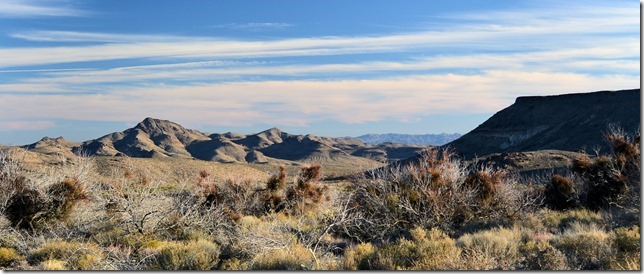
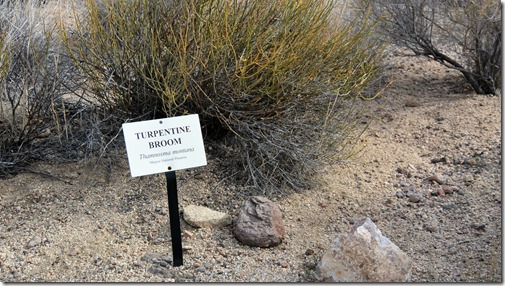 The trail from the campground to the visitor center is placarded with names of local shrubs and plants. I confess to having nearly zero capacity for botany (at least the memory part). There are a few plants that I can recognize, like joshua trees, prickly pear, and cholla, but in general a lot of the gray-green brush looks pretty similar to me. Regardless of this fact, I religiously read all the signs, and steadfastly commit every name to memory – – – which lasts for less time than it took you to read this paragraph.
The trail from the campground to the visitor center is placarded with names of local shrubs and plants. I confess to having nearly zero capacity for botany (at least the memory part). There are a few plants that I can recognize, like joshua trees, prickly pear, and cholla, but in general a lot of the gray-green brush looks pretty similar to me. Regardless of this fact, I religiously read all the signs, and steadfastly commit every name to memory – – – which lasts for less time than it took you to read this paragraph.
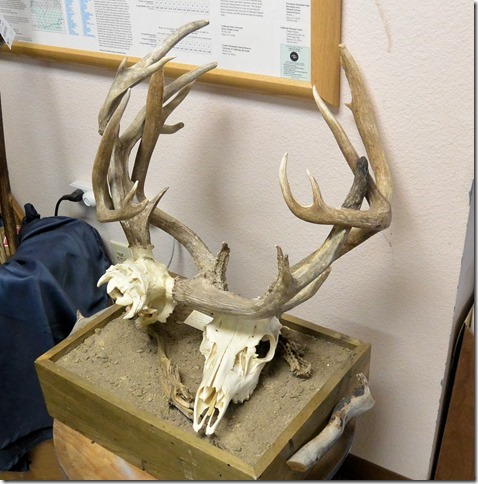 Here’s a kind of sad story from the visitors’ center – – two young bucks got their horns locked in rutting combat, and couldn’t get separated. Their bones, picked clean, were found by a ranger exactly as you see them. One can only hope that a mountain lion or pack of coyotes dispatched them before they had a long lingering death from thirst or starvation. We were reminded (again) of how easy a life we humans have.
Here’s a kind of sad story from the visitors’ center – – two young bucks got their horns locked in rutting combat, and couldn’t get separated. Their bones, picked clean, were found by a ranger exactly as you see them. One can only hope that a mountain lion or pack of coyotes dispatched them before they had a long lingering death from thirst or starvation. We were reminded (again) of how easy a life we humans have.
We met a charming couple in camp, Merrill and Barbara (and their dog Bailey), and we all decided to go exploring together. Barbara grew up in the area and was very familiar with the surrounds, and we learned a lot about the recent history. The Preserve was designated in 1994, and a lot of the homes and businesses in the area were affected by the new ownership (U.S. Government).
We drove out northeast of camp, through some old and new fence lines and along a not-too-rough 4WD track.
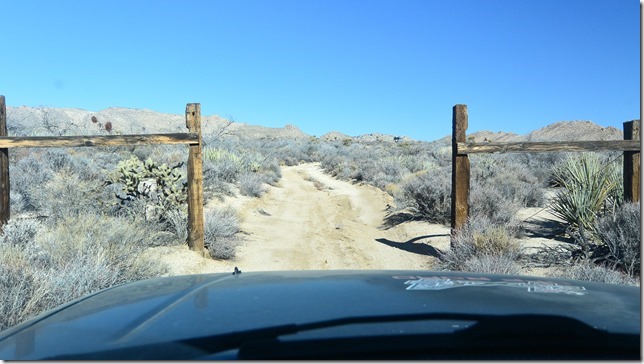
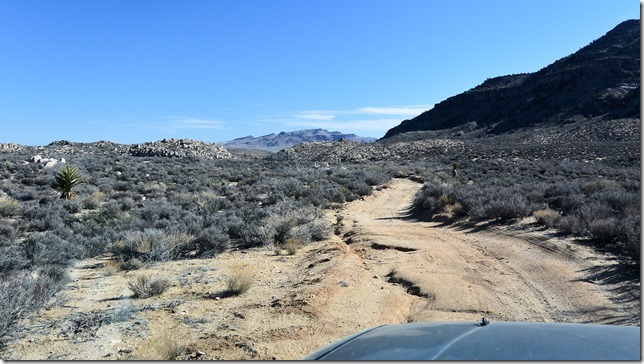
This ancient watering hole has a weathered old fence – to keep the cattle OUT. They’ll chop it all up into a muddy quagmire if they’re allowed free access.
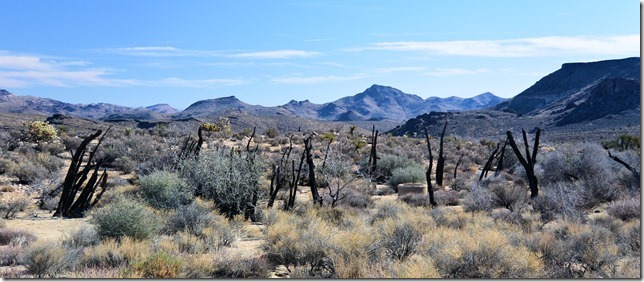
Up the trail, we parked and got out and started hiking up toward Table Mountain.
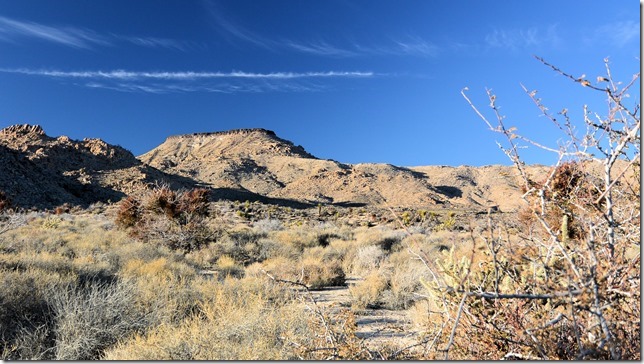
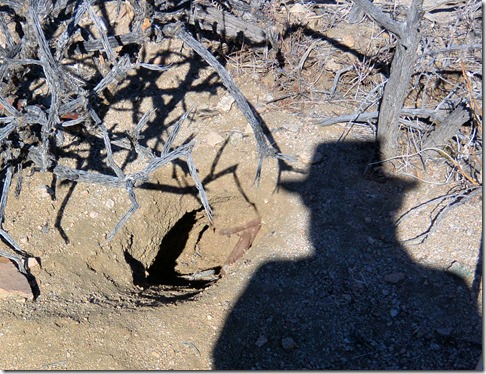
The trail went up a long sand wash, following the drainage along the west side of the mountain.
We stopped and looked at this giant burrow for a while, and none of us could figure out who dug it. Too big for rabbits; no badgers in the area; not situated properly for coyotes. Tortoise? Maybe.
Trekking on, we realized that our late start wouldn’t allow us to get to the saddle below the mountain. And no, we weren’t even thinking about getting to the top – as simple as it looks, it’s at least an 8-hour climb.
Bailey had a grand time accompanying us, keeping a sharp eye out for tasty burro turds (“Bailey, DROP IT!!!”). I have never figured out why dogs love to eat other animals’ dung, but it appears to be universal. We found it kind of comical, but Bailey’s owners apparently didn’t fancy snuggling up at night to a cuddly doggie with feces-breath.
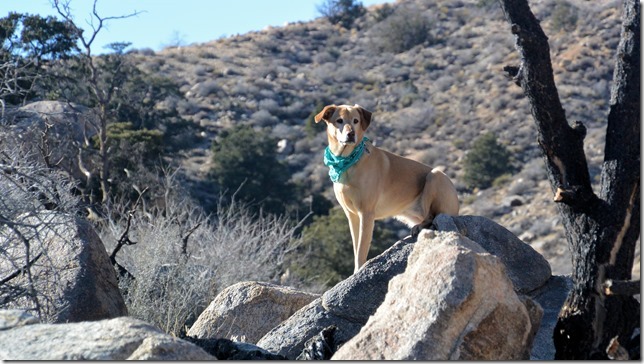
At our turn-around point, we paused to admire some stark rock formations, and the view of the southern portion of the Preserve.
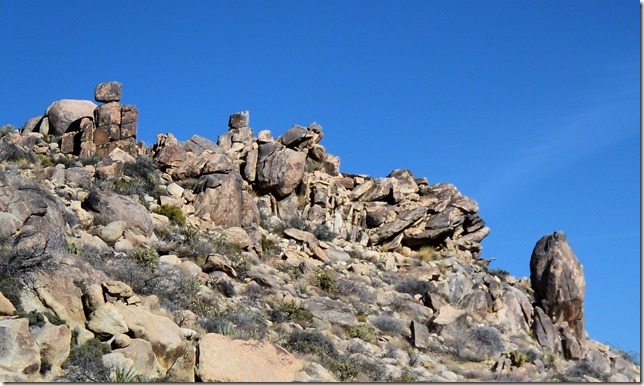
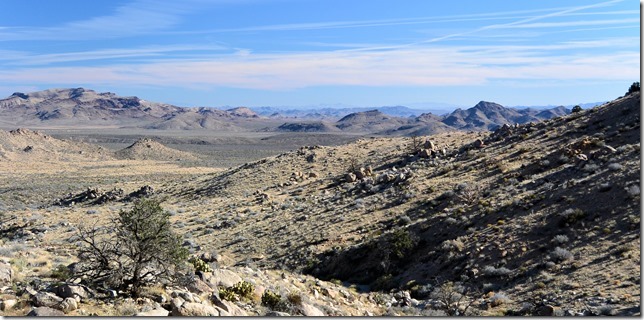
On the drive back to camp, we watched the range cattle browsing the tough, dry grasses in the lowering sun. We couldn’t help wondering how they could even stay alive out here, let alone be a decent profit to the ranchers. Gaunt, shaggy, and horned, they’re somehow out of place – unlike the charismatic burros, they just don’t seem like they belong in the desert.
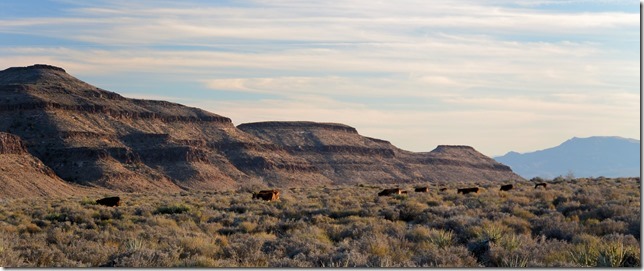
As we drove south on the camp road, the setting sun glowed against the edges of the old lava flows. The cold shadows raced up the slopes as we scurried toward our warm, cozy Howie. It was 34F at 4PM, kinda chilly for a desert?

We’re going to be here for a week or so and see what five days of rain does to this parched land – – my next post should have pictures of some very damp ground.
EARLIER POSTS on this area
- https://www.divver-city.com/blog/2014/02/10/hangin-in-mojave-1/
- https://www.divver-city.com/blog/2014/02/11/hangin-in-mojave-2a/
- https://www.divver-city.com/blog/2014/02/11/hangin-in-mojave-2b/
- https://www.divver-city.com/blog/2014/02/12/hangin-in-mojave-3-banshee-canyon-and-a-hyper-sunset/
- https://www.divver-city.com/blog/2014/02/13/mojave-roadwater-and-wandering/
- https://www.divver-city.com/blog/2014/02/15/time-for-pause/
CAMPGROUND POSTERS (area information)
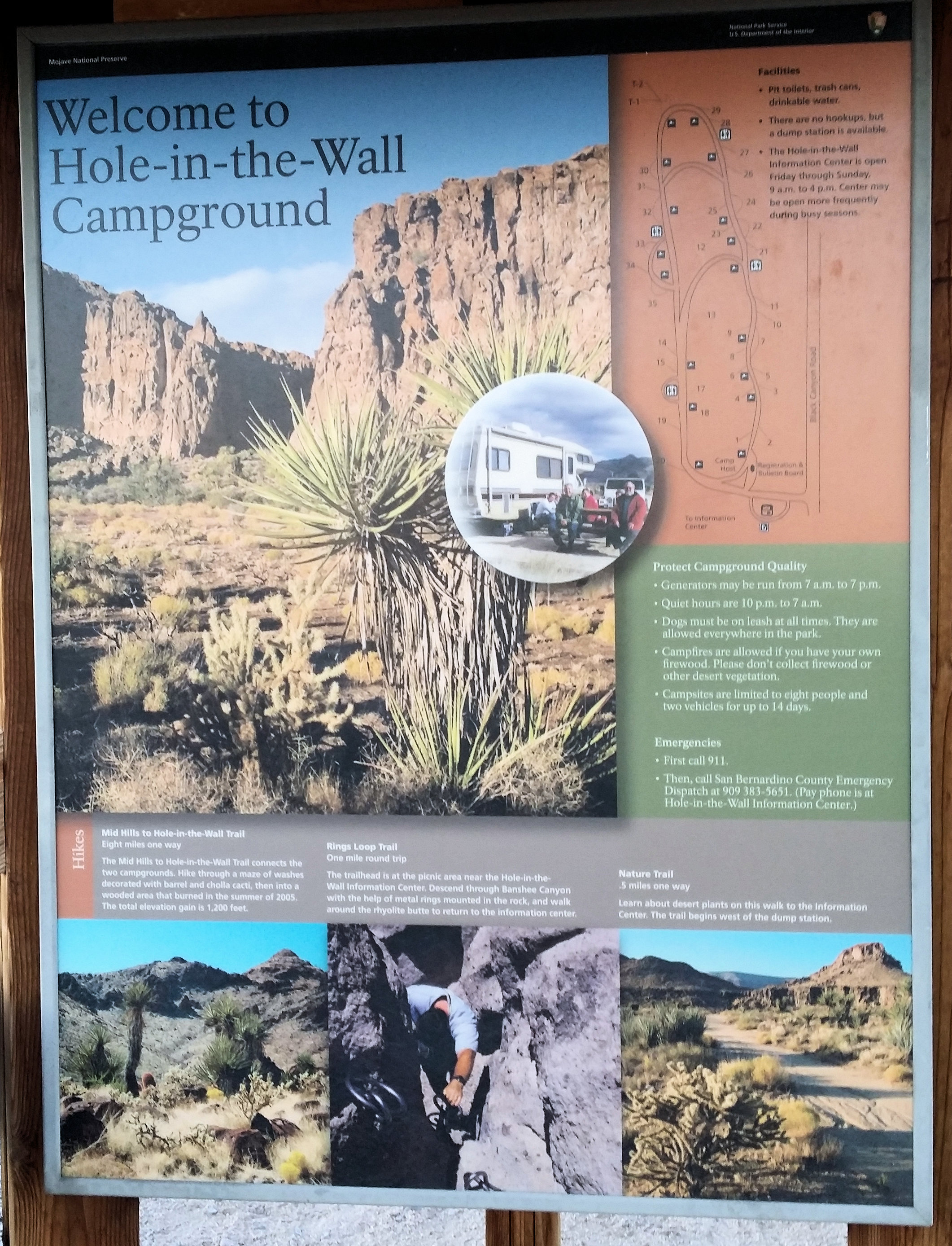
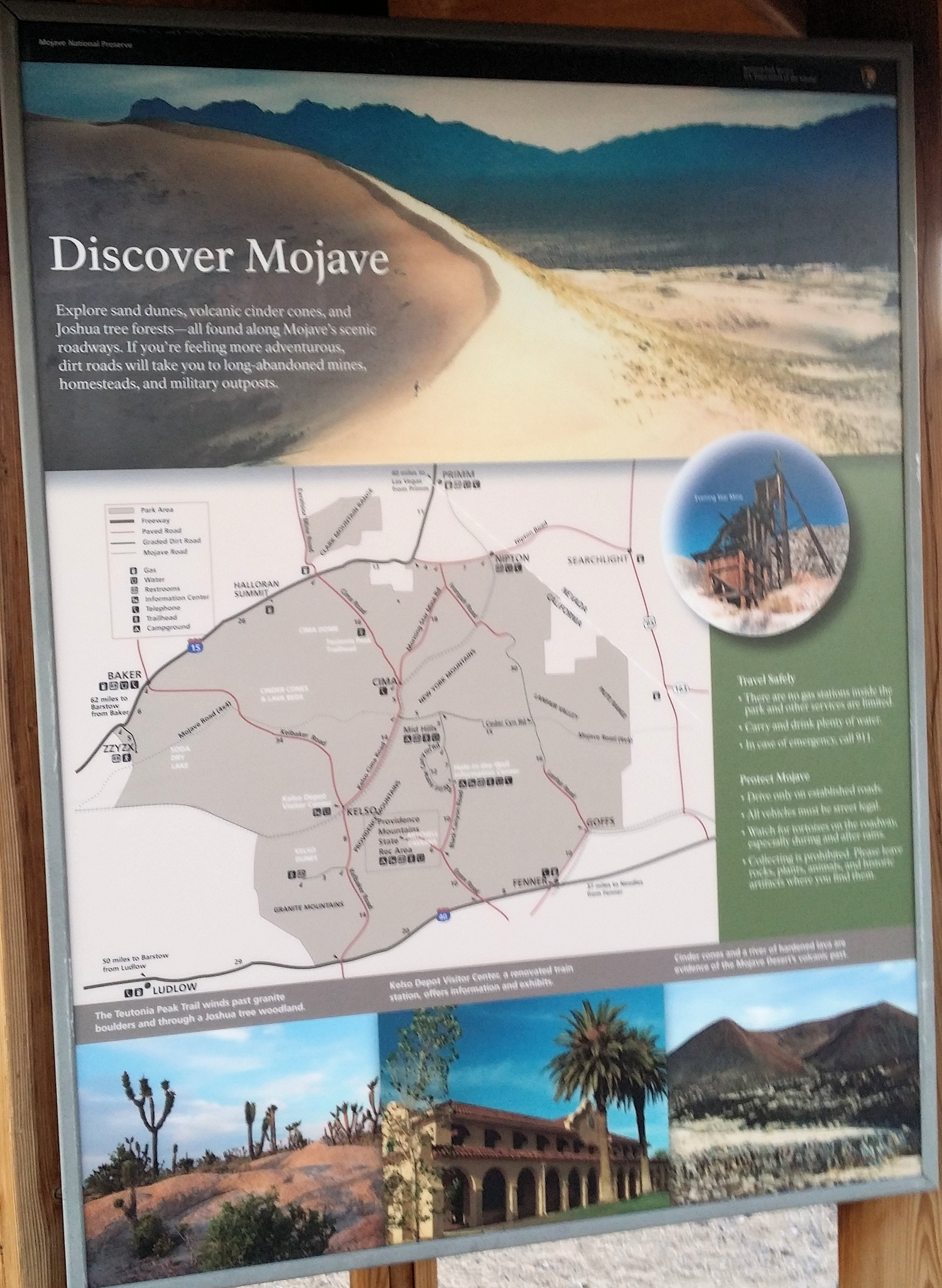
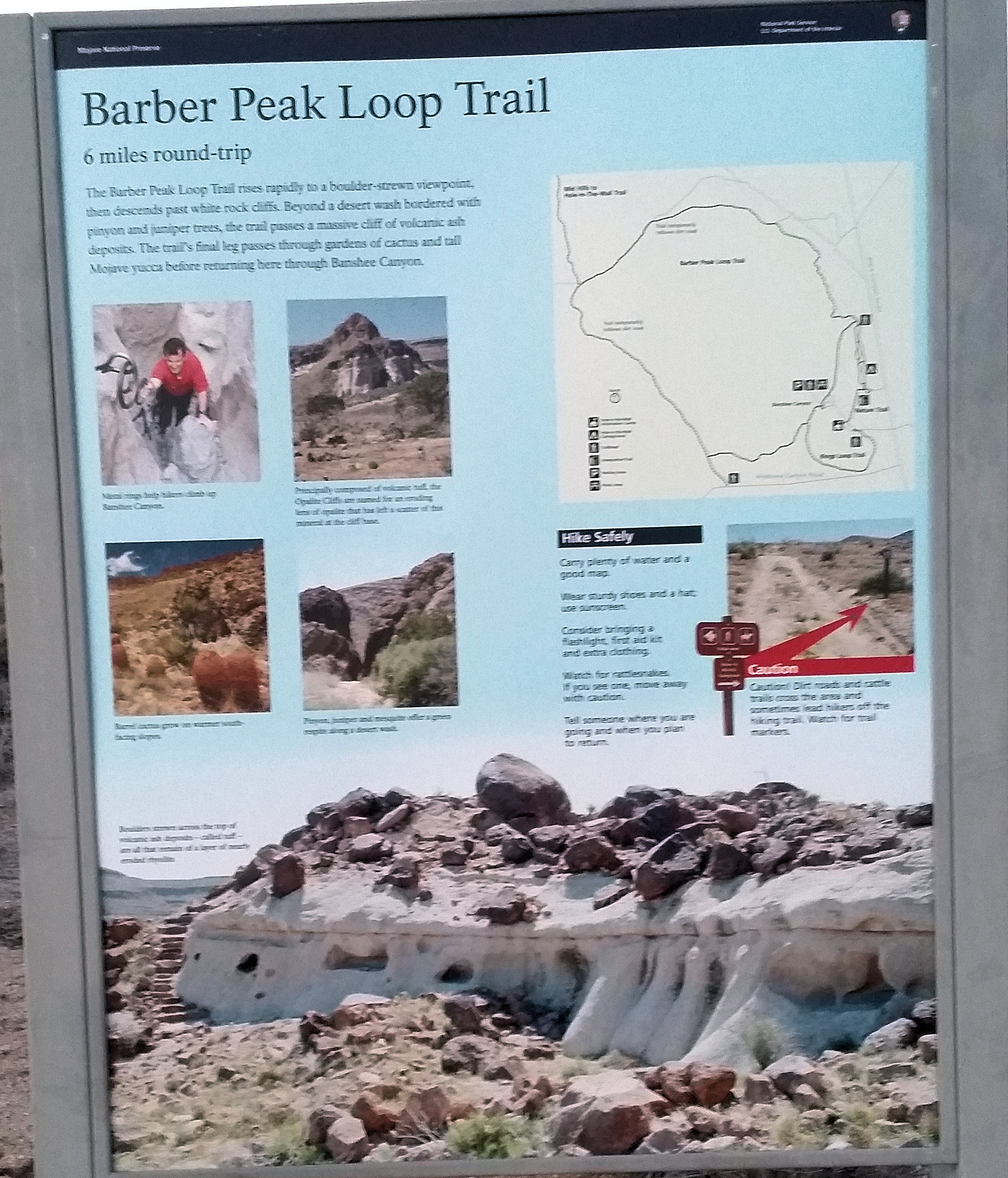

Comments
Mojave Preserve, Hole in the Wall — No Comments
HTML tags allowed in your comment: <a href="" title=""> <abbr title=""> <acronym title=""> <b> <blockquote cite=""> <cite> <code> <del datetime=""> <em> <i> <q cite=""> <s> <strike> <strong>